Study on the Wear Performance of 20CrMnTi Gear Steel with Different Penetration Gradient Positions
Abstract
1. Introduction
2. Materials and Methods
2.1. Heat Treatment Process
2.2. Carbon Concentration Test
2.3. Microstructure and Hardness Test
2.4. Wear Test
3. Results and Discussions
3.1. Carbon Concentration Gradient
3.2. Microstructure and Hardness
3.3. Carburized Layer Surface Wear Performance Analysis
3.3.1. Coefficient of Friction
3.3.2. Wear Volume Loss
3.3.3. Wear Mechanism
3.4. Analysis of Wear Performance at Different Gradient Positions of the Carburized Layer
3.4.1. Coefficient of Friction
3.4.2. Wear Volume
3.4.3. Wear Mechanism
4. Conclusions
Author Contributions
Funding
Informed Review Board Statement
Informed Consent Statement
Data Availability Statement
Conflicts of Interest
References
- Liu, S.; Yang, F.; Liu, L.; Wang, J.; Peng, J.; Zhang, F.; An, S. Study on the effects of Al-Ce composite deoxidations on the modification behaviors of TiN inclusions in 20CrMnTi steel. J. Mater. Res. Technol. 2024, 29, 4863–4869. [Google Scholar] [CrossRef]
- Li, Y.; Cheng, G.; Lu, J.; Sun, J. Characteristics and Formation Mechanism of Complex TiN Inclusions in 20CrMnTi Gear Steel. ISIJ Int. 2022, 62, 2266–2275. [Google Scholar] [CrossRef]
- Wang, J.; Peng, J.; Liu, L.; Zhang, F.; Peng, J.; Tang, H.; Zheng, J.; An, S. Study on the Influences of Adding Rare Earth Ce on the Precipitation Behaviors of TiN Inclusions in 20CrMnTi. Materials 2023, 16, 5598. [Google Scholar] [CrossRef]
- Wang, H.; Zhou, C.; Lei, Y.; Liu, Z. An Adhesive Wear Model for Helical Gears in Line-Contact Mixed Elastohydrodynamic Lubrication. Wear 2019, 426–427, 896–909. [Google Scholar] [CrossRef]
- Zheng, F.; Zhang, J.; Yao, L.; Tan, R. Investigation on the Wear of Spur Gears Generated by Modified Cutter. Friction 2021, 9, 288–300. [Google Scholar] [CrossRef]
- Chen, Z.; Ji, P. Research on the Variation of Mesh Stiffness and Transmission Error for Spur Gear with Tooth Profile Modification and Wear Fault. Eng. Fail. Anal. 2021, 122, 105184. [Google Scholar] [CrossRef]
- Zhao, J.; Yu, X.; Sheng, W.; Li, Z.; Zhang, H.; Zhu, R. Effect of Machined Tooth Surface Mixed Lubrication Sliding Wear on Gear Dynamic Characteristics. Machines 2022, 11, 25. [Google Scholar] [CrossRef]
- Wang, G.; Sang, X.; Wang, S.; Zhang, Y.; Xu, G.; Zhao, M.; Peng, Z. Surface Integrity and Corrosion Resistance of 18CrNiMo7-6 Gear Steel Subjected to Combined Carburized Treatment and Wet Shot Peening. Surf. Coat. Technol. 2024, 484, 130862. [Google Scholar] [CrossRef]
- Chen, D.; Zhang, T.; Wang, Y.; Zhou, Y. Wear Resistance and Microstructure of the Nitriding Layer Formed on 2024 Aluminum Alloy by Plasma-Enhanced Nitriding at Different Nitriding Times. Mater. Res. Express 2019, 6, 066405. [Google Scholar] [CrossRef]
- Qian, W.; Wang, Y.; Liu, K.; Yin, X.; He, X.; Xie, L. Experimental Study on the Effect of Shot Peening and Re-Shot Peening on the Residual Stress Distribution and Fatigue Life of 20CrMnTi. Coatings 2023, 13, 1210. [Google Scholar] [CrossRef]
- Liu, Z.; Li, Y.; Guo, X.; Tao, J.; Huang, J.; Fang, L. Microstructure and Tribological Properties of Ion Beam-Modified GO-Reinforced Copper Matrix Composites. Carbon. Lett. 2023, 33, 1549–1559. [Google Scholar] [CrossRef]
- Hu, H.; Mao, L.; Yin, S.; Liao, H.; Zhang, C. Wear-Resistant Ceramic Coatings Deposited by Liquid Thermal Spraying. Ceram. Int. 2022, 48, 33245–33255. [Google Scholar] [CrossRef]
- Izciler, M.; Tabur, M. Abrasive Wear Behavior of Different Case Depth Gas Carburized AISI 8620 Gear Steel. Wear 2006, 260, 90–98. [Google Scholar] [CrossRef]
- Zhang, R.; Yuan, Q.; Tang, E.; Mo, J.; Zhang, Z.; Hu, H.; Xu, G. Role of Precipitates on the Grain Coarsening of 20CrMnTi Gear Steel during Pseudo-Carburizing. Metals 2023, 13, 1422. [Google Scholar] [CrossRef]
- Wang, Y.; He, Q.; Yang, Q.; Xu, D.; Yang, Z.; Zhang, F. Microstructure Characteristics and Wear Performance of a Carburizing Bainitic Ferrite + Martensite Si/Al-Rich Gear Steel. Metals 2022, 12, 822. [Google Scholar] [CrossRef]
- Álvarez, Á.; Calleja, A.; Arizmendi, M.; González, H.; Lopez De Lacalle, L. Spiral Bevel Gears Face Roughness Prediction Produced by CNC End Milling Centers. Materials 2018, 11, 1301. [Google Scholar] [CrossRef]
- Ding, H.; Li, H.; Huang, R.; Tang, J. Adaptive Data-Driven Prediction and Optimization of Tooth Flank Heat Treatment Deformation for Aerospace Spiral Bevel Gears by Considering Carburizing-Meshing Coupling Effect. Int. J. Heat Mass Transf. 2021, 174, 121301. [Google Scholar] [CrossRef]
- Liu, G.; Huo, X.; Deng, S. Control of Tooth Form Deformation in Heat Treatment of Spiral Bevel Gears Based on Reverse Adjustment of Cutting Parameters. Materials 2023, 16, 4183. [Google Scholar] [CrossRef] [PubMed]
- Petare, A.C.; Jain, N.K.; Palani, I.A. Effect of Finishing Time on Surface Finish of Spur Gears by Abrasive Flow Finishing (AFF) Process. Advances in Unconventional Machining and Composites; Springer: Singapore, 2020. [Google Scholar]
- Yadav, R.D.; Singh, A.K. A Novel Magnetorheological Gear Profile Finishing with High Shape Accuracy. Int. J. Mach. Tools Manuf. 2019, 139, 75–92. [Google Scholar] [CrossRef]
- Yadav, R.D.; Singh, A.K.; Arora, K. Parametric Analysis of Magnetorheological Finishing Process for Improved Performance of Gear Profile. J. Manuf. Process. 2020, 57, 254–267. [Google Scholar] [CrossRef]
- Ma, Z.; Xu, H.; Zhang, W.; Xie, H.; Tong, S.; Li, C.; Zhao, H.; Ren, L. Tribological Properties of High-Entropy Alloy Nanolaminates under Different Normal Loads and Temperatures. Surf. Interfaces 2025, 64, 106452. [Google Scholar] [CrossRef]
- Manjith Srinivas, K.; Bharath, S.; Krishna Chaitanya, P.N.V.; Pramod, M.; Subbiah, R. Improving Tribological Properties of P91 Steels through Carburizing Process. Mater. Today Proc. 2020, 27, 1575–1578. [Google Scholar] [CrossRef]
- Zhang, T.; Wang, J.; Pan, Z.; Tao, Q. Effect of Carbon Partition and Precipitation on Wear Resistance of Carburized Layer in Heavy-Duty Gear. Materials 2021, 14, 6958. [Google Scholar] [CrossRef] [PubMed]

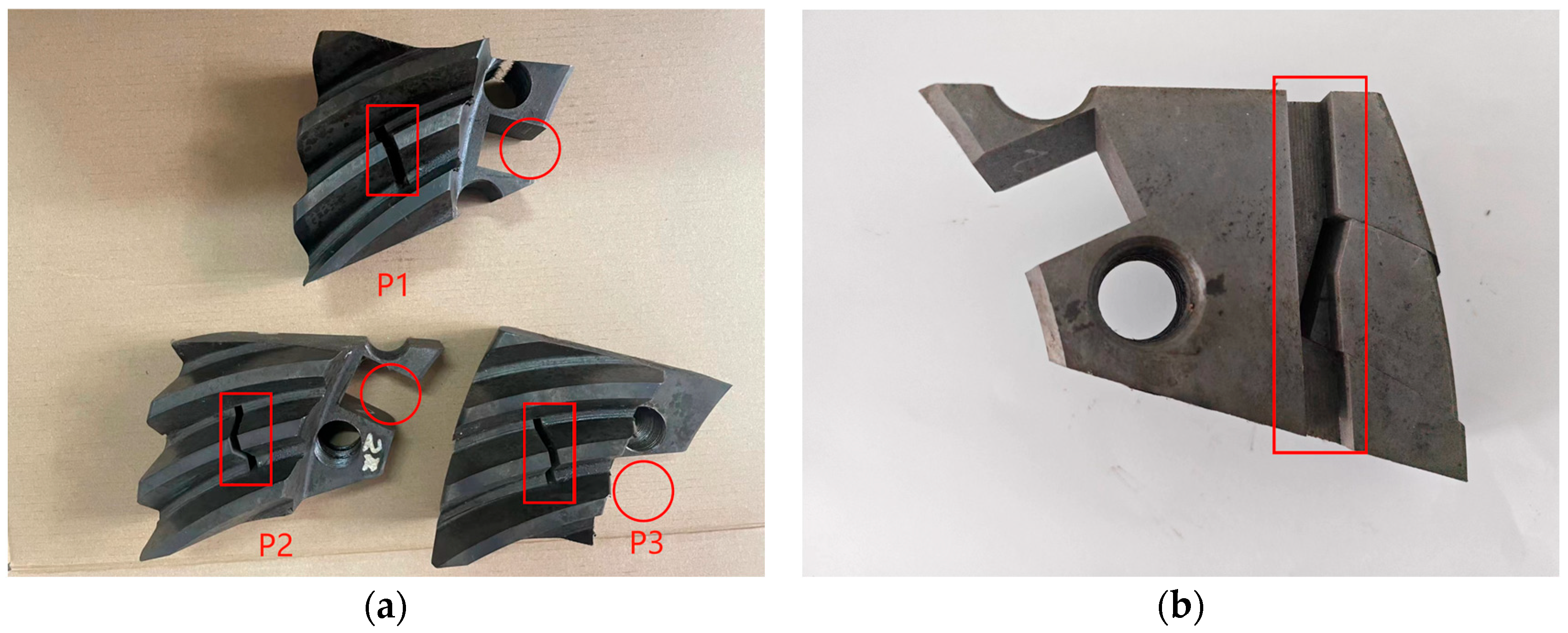
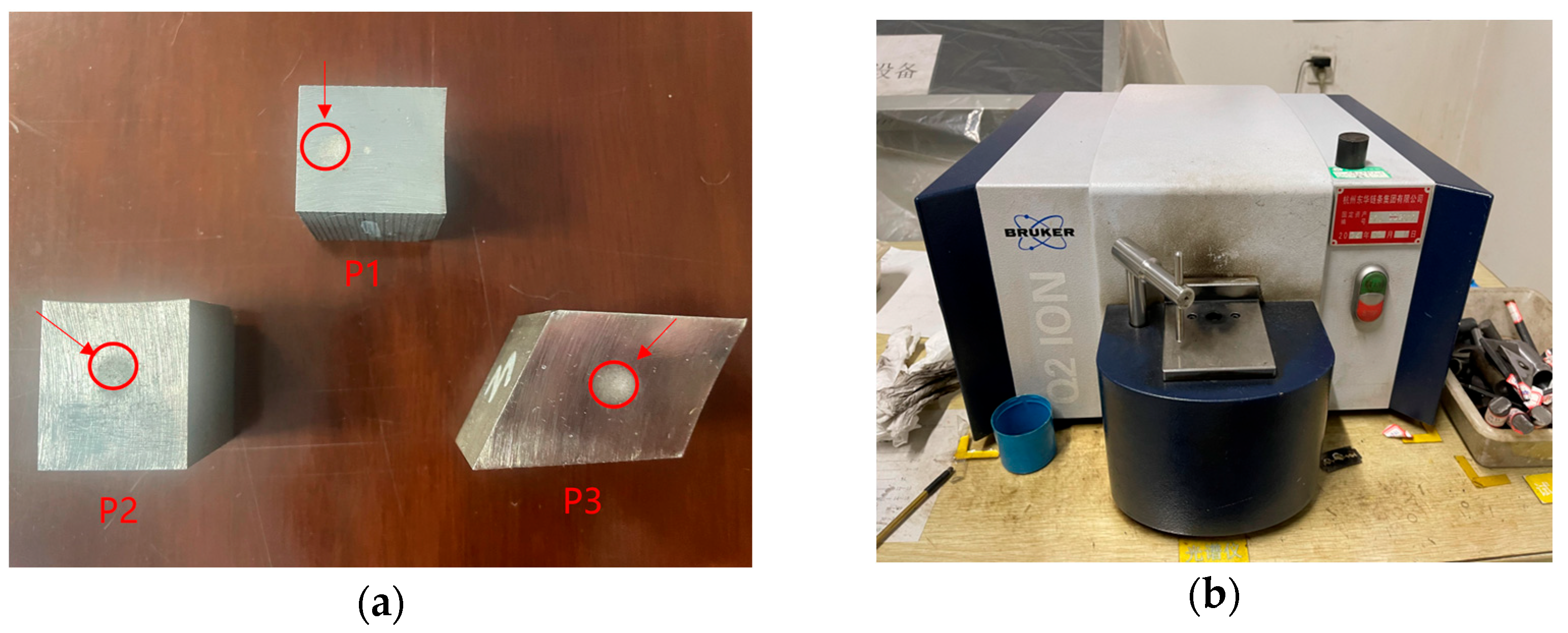


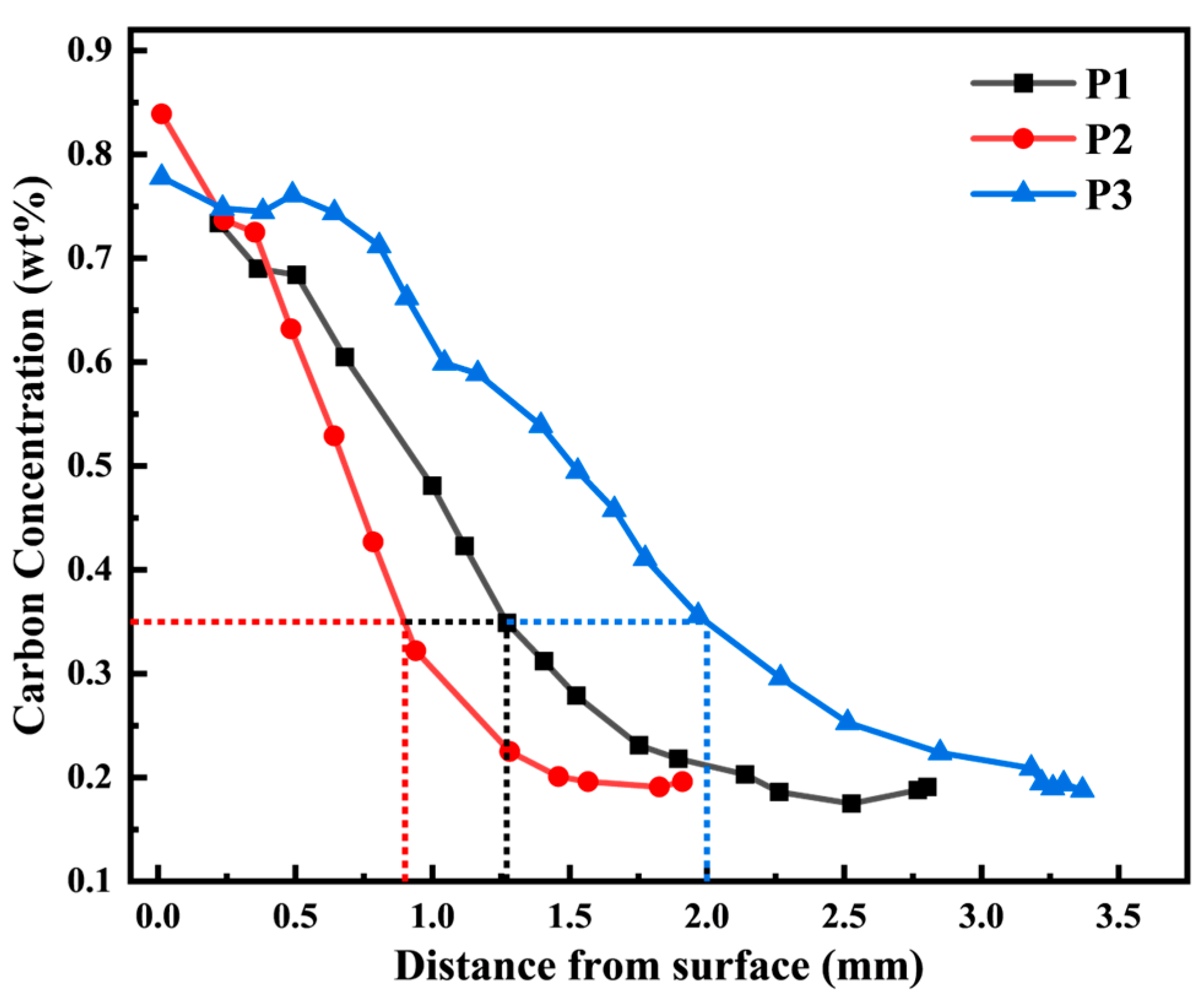

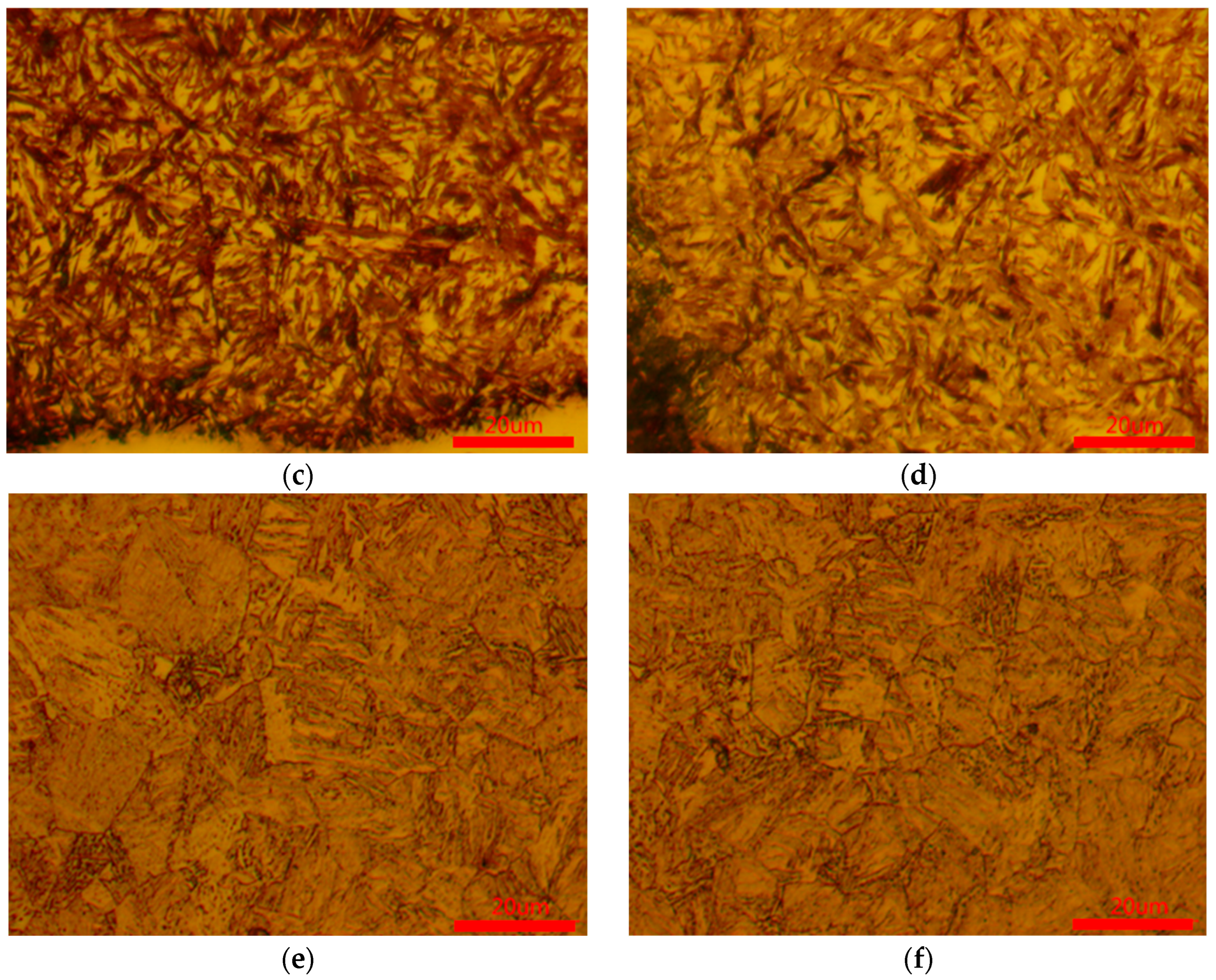


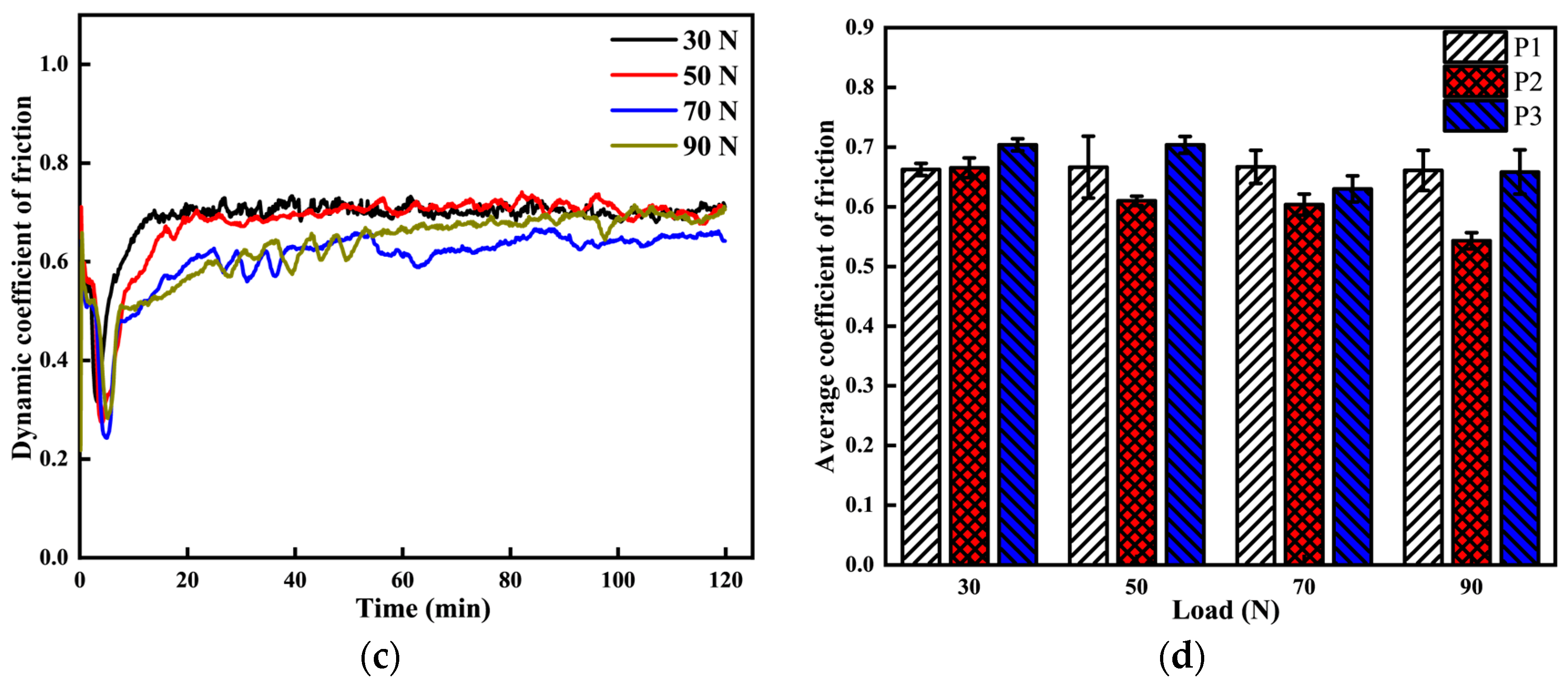
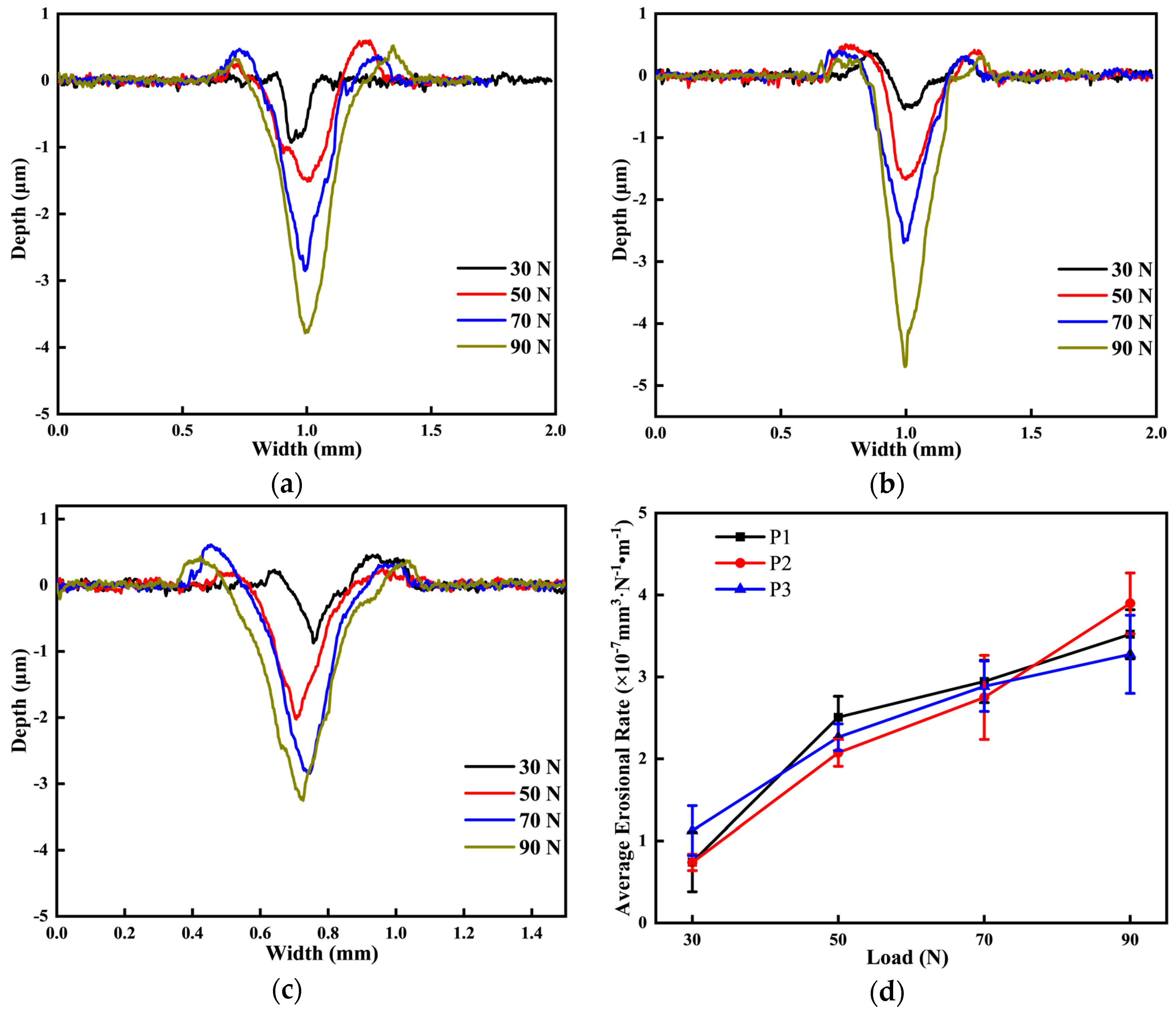
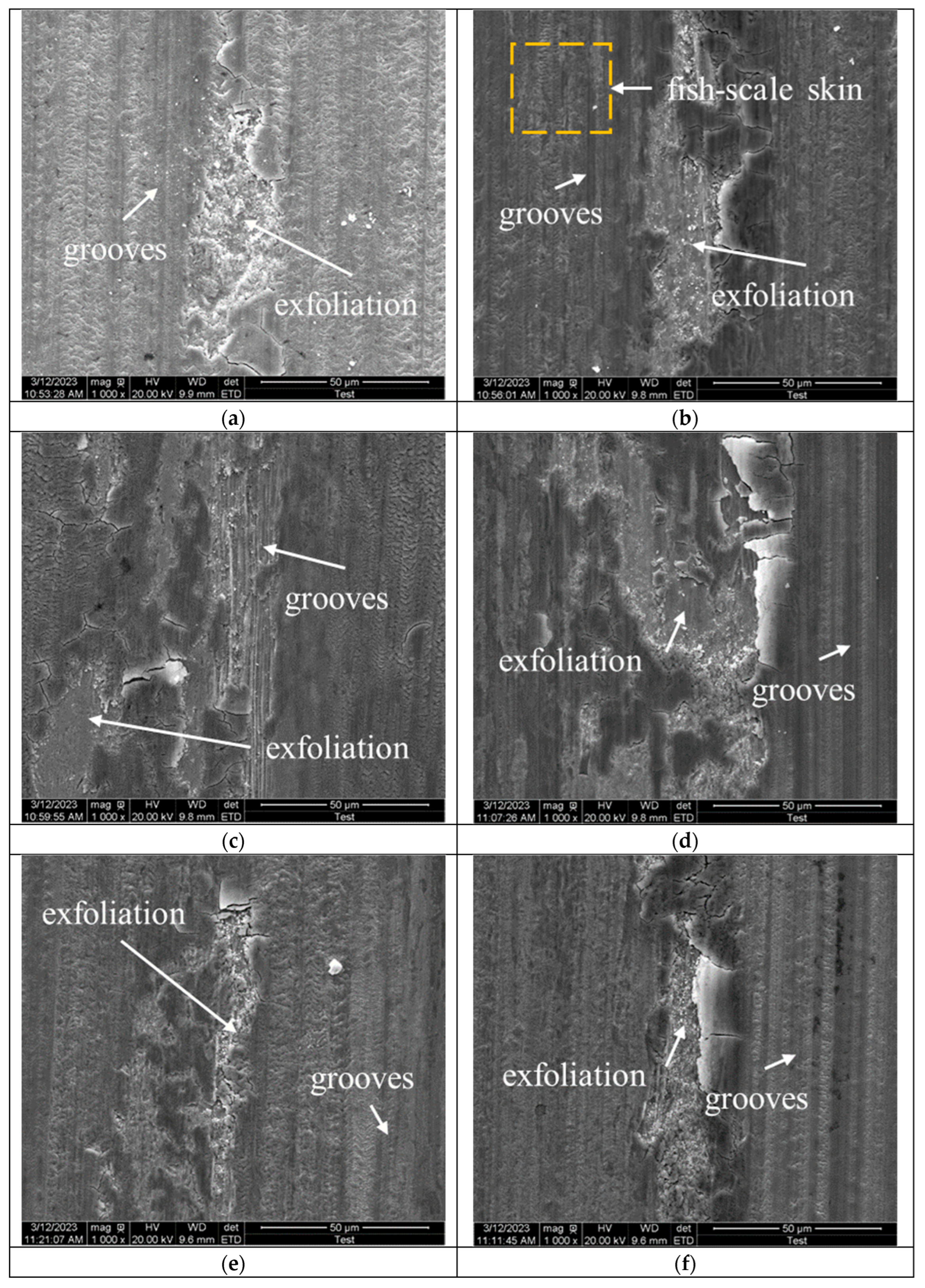
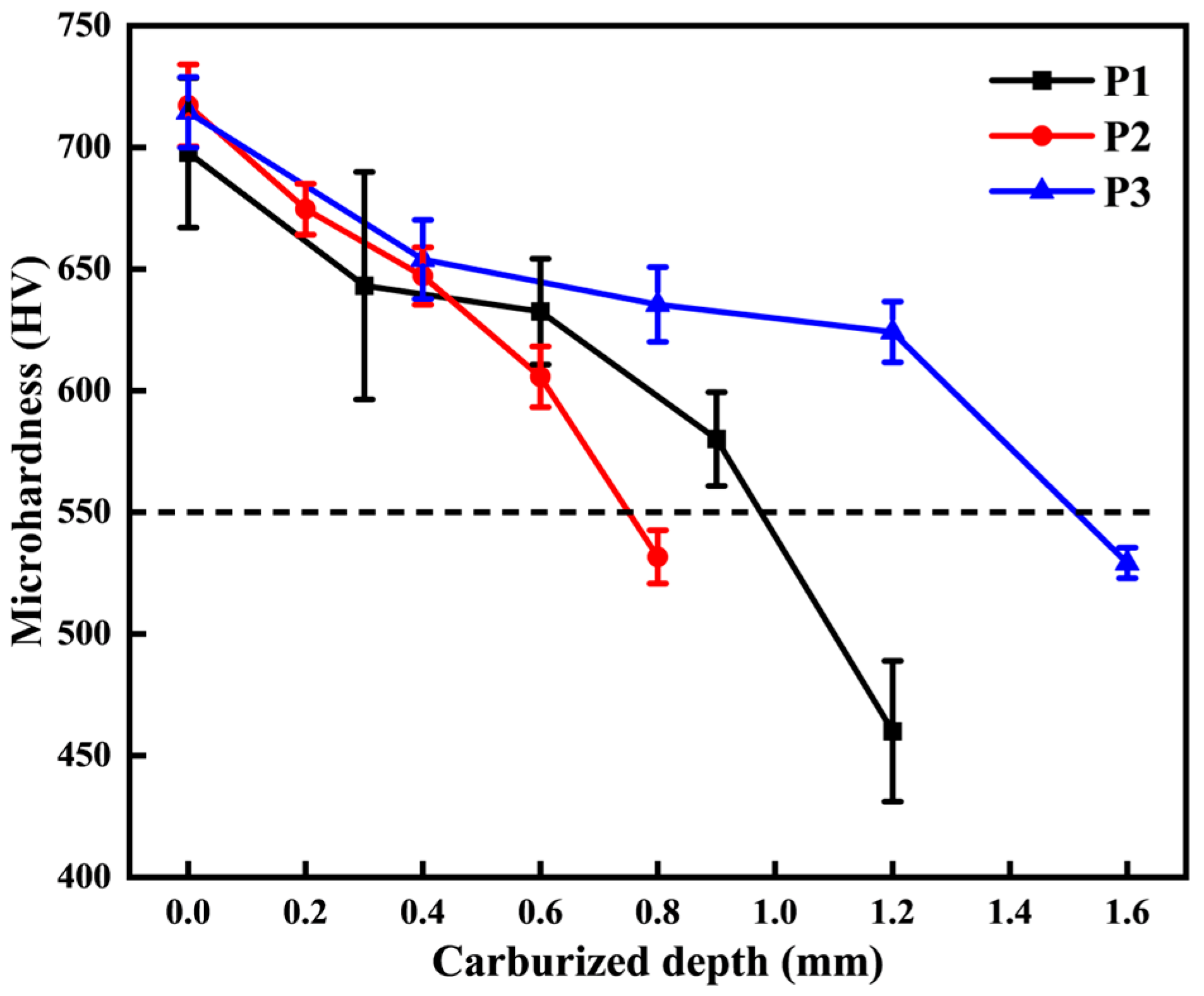

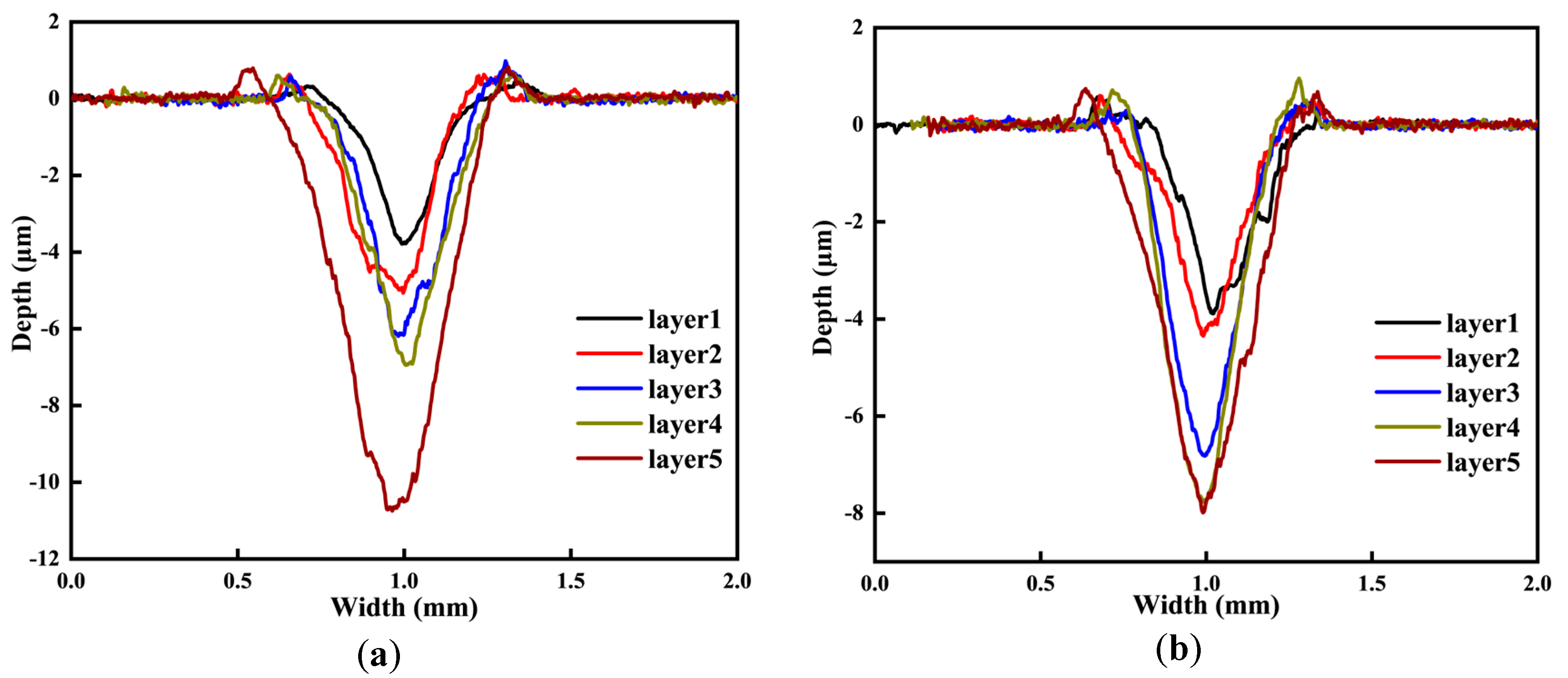
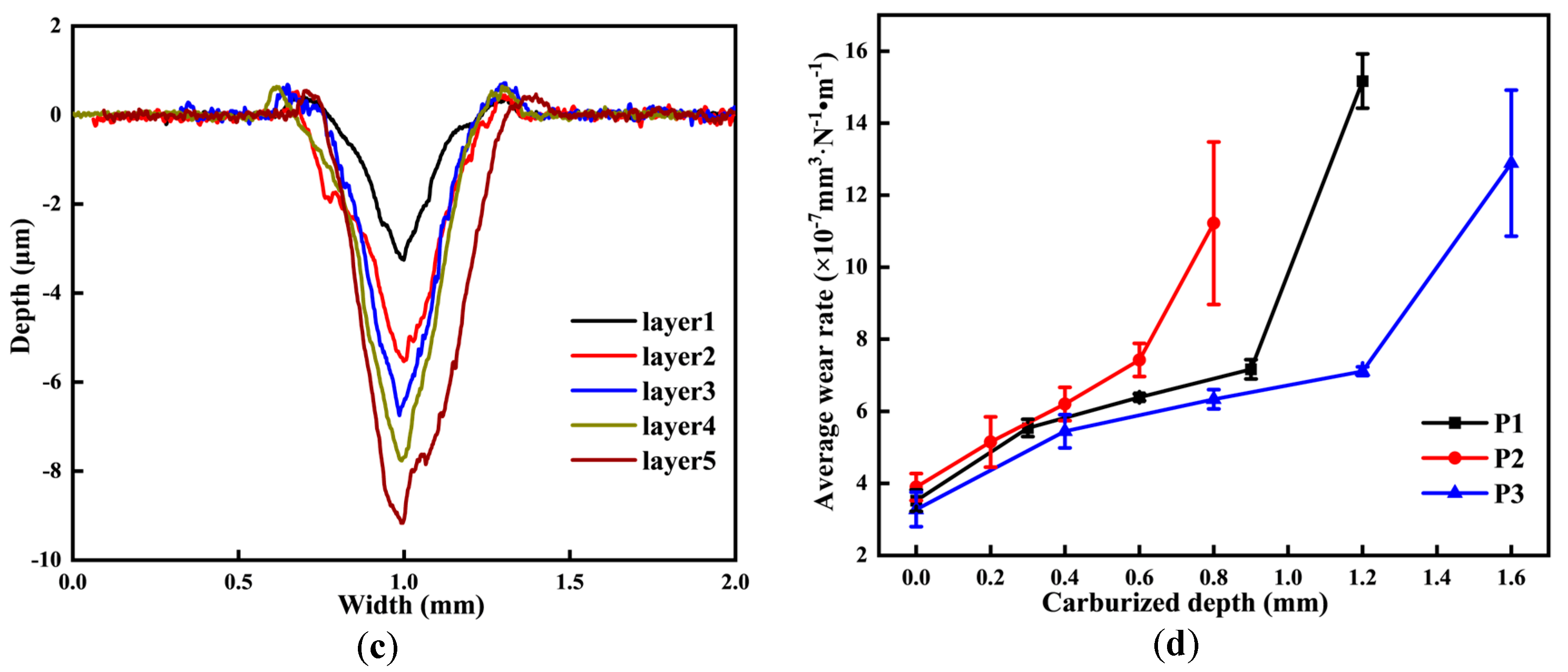

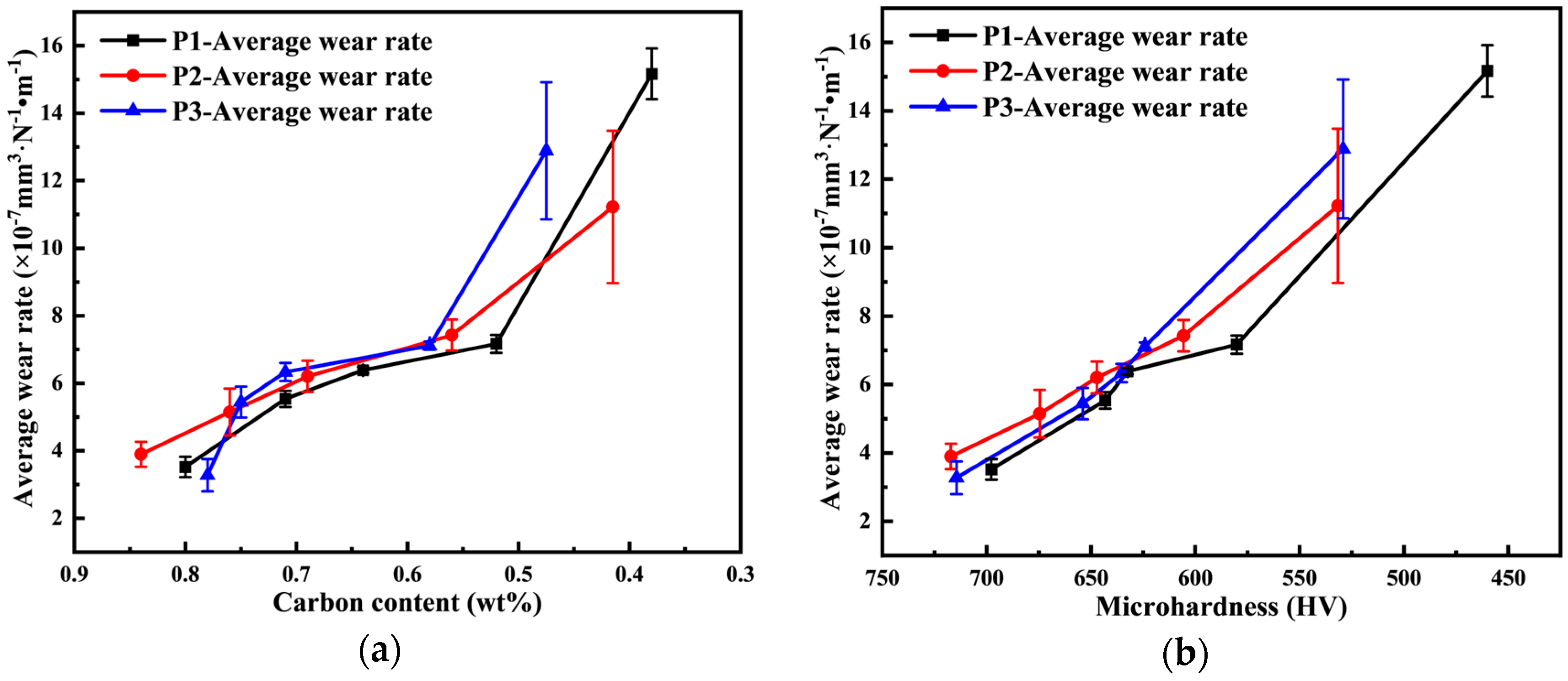

| Elements | C | Si | Mn | Cr | Ni | Ti | P | S | Cu | Fe |
|---|---|---|---|---|---|---|---|---|---|---|
| Wt% | 0.21 | 0.24 | 0.9 | 1.18 | 0.15 | 0.04 | 0.015 | 0.0079 | 0.081 | Bal |
| Carburization Process | Carburizing | Diffusion | ||||
|---|---|---|---|---|---|---|
| Temp T1 (°C) | Time t1 (min) | Carbon Potential Cp1 (%) | Temp T2 (°C) | Time t2 (min) | Carbon Potential Cp2 (%) | |
| P1 | 910 | 420 | 1.2 | 910 | 150 | 0.8 |
| P2 | 910 | 210 | 1.2 | 910 | 60 | 0.9 |
| P3 | 920 | 870 | 1.2 | 920 | 360 | 0.8 |
Disclaimer/Publisher’s Note: The statements, opinions and data contained in all publications are solely those of the individual author(s) and contributor(s) and not of MDPI and/or the editor(s). MDPI and/or the editor(s) disclaim responsibility for any injury to people or property resulting from any ideas, methods, instructions or products referred to in the content. |
© 2025 by the authors. Licensee MDPI, Basel, Switzerland. This article is an open access article distributed under the terms and conditions of the Creative Commons Attribution (CC BY) license (https://creativecommons.org/licenses/by/4.0/).
Share and Cite
Zhang, Y.; Wei, S.; Yang, W.; Guan, J.; Li, G. Study on the Wear Performance of 20CrMnTi Gear Steel with Different Penetration Gradient Positions. Materials 2025, 18, 3685. https://doi.org/10.3390/ma18153685
Zhang Y, Wei S, Yang W, Guan J, Li G. Study on the Wear Performance of 20CrMnTi Gear Steel with Different Penetration Gradient Positions. Materials. 2025; 18(15):3685. https://doi.org/10.3390/ma18153685
Chicago/Turabian StyleZhang, Yingtao, Shaokui Wei, Wuxin Yang, Jiajian Guan, and Gong Li. 2025. "Study on the Wear Performance of 20CrMnTi Gear Steel with Different Penetration Gradient Positions" Materials 18, no. 15: 3685. https://doi.org/10.3390/ma18153685
APA StyleZhang, Y., Wei, S., Yang, W., Guan, J., & Li, G. (2025). Study on the Wear Performance of 20CrMnTi Gear Steel with Different Penetration Gradient Positions. Materials, 18(15), 3685. https://doi.org/10.3390/ma18153685







